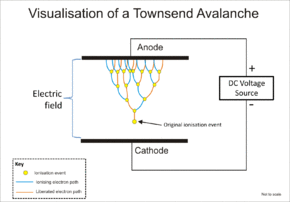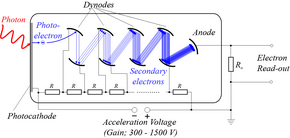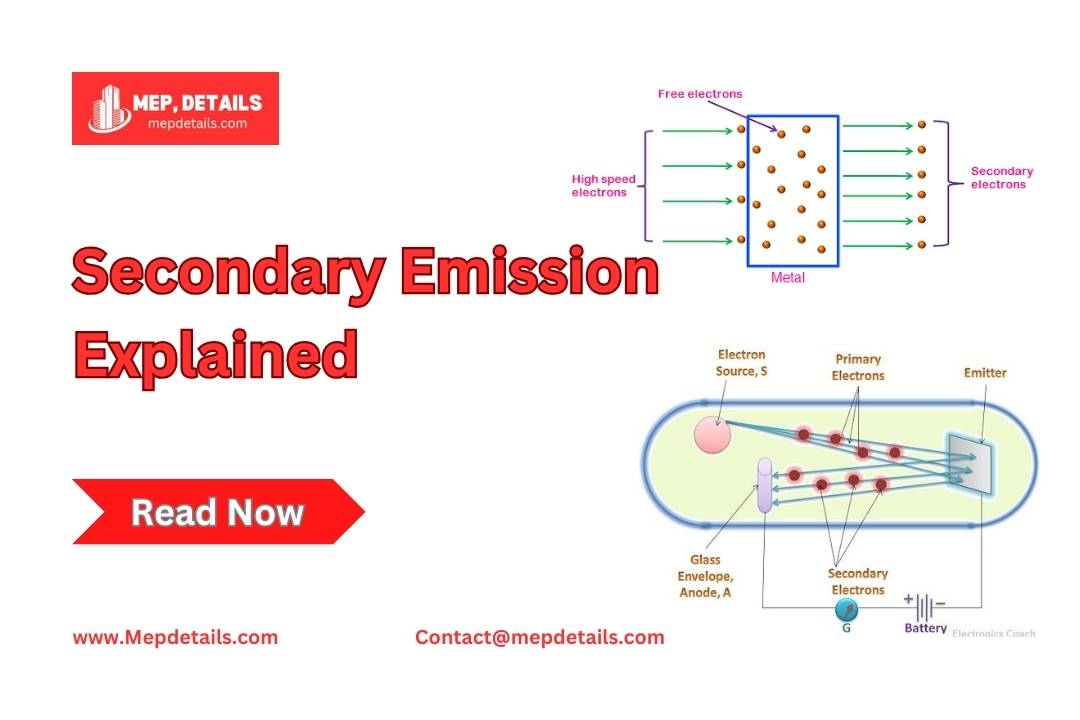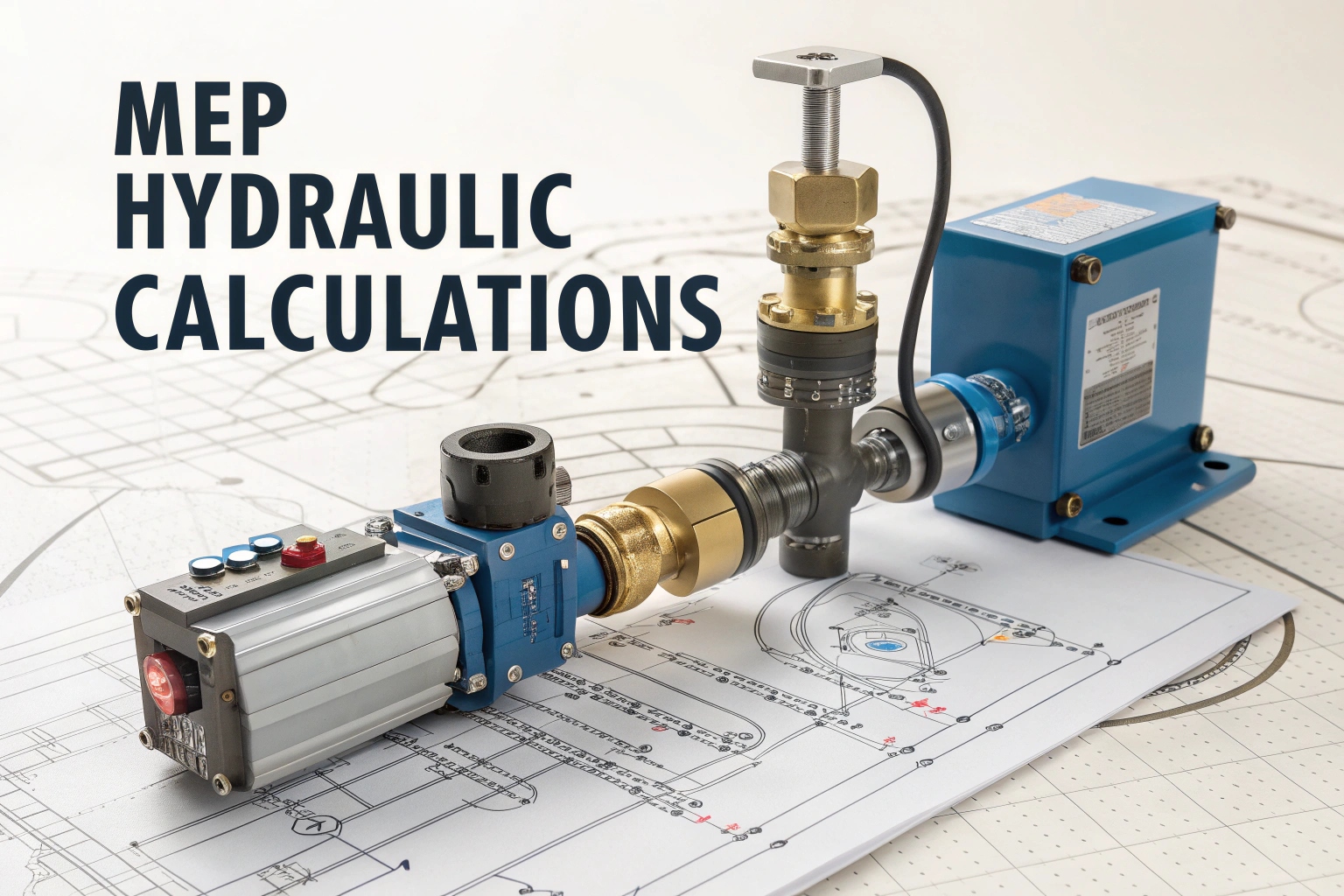In particle physics, secondary emission happens when particles with enough energy hit a surface or pass through a material, causing other particles to release. This often refers to the release of electrons, called secondary electrons, when charged particles like electrons or ions strike a metal surface in a vacuum tube. The number of secondary electrons per particle is called the secondary emission yield. Secondary electron emission plays a role in devices like photomultiplier and image intensifier tubes. In this article, we will learn about electron emission, its working principle, as well as its applications and challenges.
What is Electron Emission?

J.J. Thomson discovered electrons in 1897. He conducted an experiment using a cathode-ray tube, an evacuated tube with gas inside. When he passed an electric charge through the gas, he found electrons. Electron emission happens when electrons are released from a metal surface. In photoelectric emission, we learn about the work function, which is the energy needed to release electrons from a surface. Electrons can come from light or other surfaces too.
How Does Secondary Electron Emission Work?
Secondary electron emission happens in two main ways: elastic scattering and inelastic scattering.
Elastic Scattering In elastic scattering, a primary particle hits an electron on the surface and gives it some of its energy without losing any energy. If the scattered electron has enough energy, it escapes from the surface. This type of scattering usually happens with low-energy primary particles (less than 50 eV) and materials with low work functions (the minimum energy needed to remove an electron from a surface).
Inelastic Scattering In inelastic scattering, a primary particle hits an electron inside the material and loses some of its energy. The excited electron then moves toward the surface, and if it has enough energy, it escapes. This process is more common with high-energy primary particles (greater than 50 eV) and materials with high work functions. One primary particle can cause multiple secondary electrons to be emitted, as the excited electron may hit other electrons and transfer energy to them as it moves to the surface.
Applications of Secondary Emission

Secondary Emissive Materials
Some commonly used materials for secondary emission include:
- Alkali antimonide
- Beryllium oxide (BeO)
- Magnesium oxide (MgO)
- Gallium phosphide (GaP)
- Gallium arsenide phosphide (GaAsP)
- Lead oxide (PbO)
Photomultipliers and Similar Devices
In a photomultiplier tube, electrons are released from a photocathode and move towards a polished metal electrode (called a dynode). When they hit the surface of the electrode with enough energy, they release more electrons through secondary emission. These new electrons continue to move towards additional dynodes, repeating the process several times. This results in a significant increase in electrons, usually around one million times, creating a current pulse that can be detected.
Similar electron multipliers can also detect fast particles like electrons or ions.
What Are Some Challenges of Secondary Electron Emission?
Secondary electron emission can cause issues in electronic devices that work in vacuum conditions, like vacuum tubes and klystron tubes. Here are some examples:
Parasitic oscillation: This happens when secondary electrons released from an anode or a collector electrode return to a cathode or an emitter electrode because of the electric or magnetic field in the device. This forms a feedback loop, leading to unwanted oscillations or noise in the output signal. To reduce parasitic oscillation, grids or shields can be placed between electrodes, electrodes can be coated with materials that have low yields, or negative bias voltages can be applied to electrodes.
Negative resistance: This happens when secondary electrons from an anode or collector electrode reduce the current flow because of their opposite charge. This creates a negative slope in the voltage-current curve of the device, which can make circuits unstable or lead to oscillation. Using grids or shields between electrodes, coating electrodes with materials that have high yields, or applying positive bias voltages to electrodes can prevent negative resistance.
Conclusion
Secondary emission happens when high-energy particles hit a surface or material, causing the release of secondary particles like electrons or ions. Secondary electron emission, a type of this process, occurs when high-energy electrons or other charged particles impact a surface, releasing electrons. This emission results from two main processes: elastic scattering and inelastic scattering. Many devices use secondary electron emission to amplify or detect weak electric currents or radiation. However, it can also create issues in some electronic devices that function in vacuum conditions.
FAQs
What is secondary emission?
Secondary emission happens when electrons get knocked out of a solid material by a beam of charged particles. The electrons inside the material gain enough energy from the particles hitting them, which allows them to escape from the material’s surface.
What is primary and secondary electron emission?
In electron emission, the particles that hit the surface are called primary electrons, and the electrons that get knocked out are called secondary electrons. The amount of secondary emission depends on the material’s properties and the energy and angle of the primary electrons.
What are primary and secondary emissions?
A primary pollutant is a harmful substance released directly from a source, like a factory or car. A secondary pollutant forms when primary pollutants react with other substances in the atmosphere.
What is the secondary emission yield?
The secondary electron emission yield (SEY) shows how many electrons a material emits when hit by other electrons. SEY is the ratio of the number of emitted electrons to the number of incoming electrons. It is usually represented by the symbol σ.
Read More – Nature of Electricity














